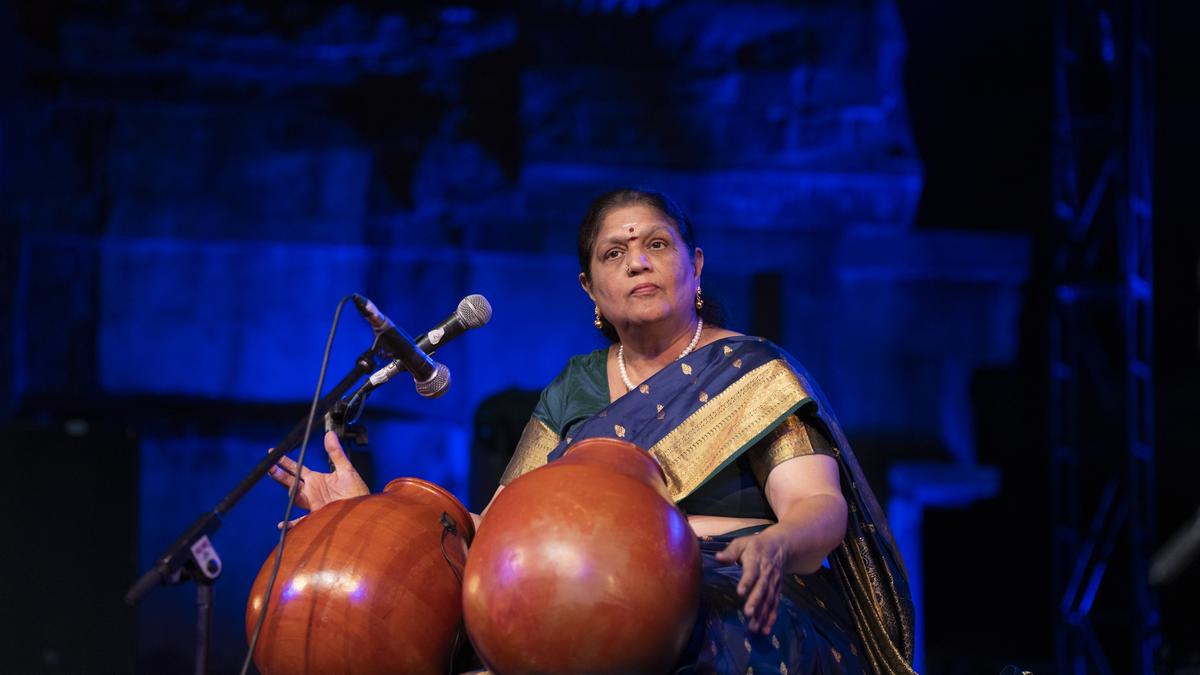
Three women artistes’ journey to the centre of the stage
The Hindu
Three women musicians break barriers in percussion and folk music at Jodhpur RIFF festival.
Picture this: A percussionist has arrived at the concert venue, but is asked to leave because the other percussionist has declared, “I do not play concerts with or for women.” The organisers and “main artiste” (as the artiste sitting centre stage is called) make a hasty apology and send her home. Enraged, she cries loud enough for her neighbours to gather and find out what happened. She vows to bring her work and instrument — the ghatam — to the centre of the stage. And, that is where Sukkanya Ramgopal, the musician who has paved the way for other women in percussion, sat when she performed at Jodhpur RIFF’s 2024 edition.
The genre-agnostic festival does indeed offer varieties of music but, remarkably, also brings to the fore women who have crossed many hurdles to get to the stage.
Sukkanya Ramgopal has taken, not one, but an array of earthen pots to the centre of the stage in the last five decades of her musical career. Her ghatam ensembles have broken notions and hierarchies — blending melody with percussion and poetry with classical music. “From the beginning, there were many hurdles to cross. So, I have come past with a lot of feeling. I don’t know what to call that emotion — anger, determination? I have fought a lot. Even now, some people tell me, ‘You are always fighting… try a softer approach’,” she says, laughing.
Whereas Sukkanya has faced many rejections for being a woman percussionist, she sometimes chooses to reject opportunities that come her way because she is a female percussionist. “How long are we going to keep playing all-women ensembles? Have you ever heard anyone say ‘all-men’ ensemble?” She shares her utopian vision of a hierarchy-free classical music world where artistes view each other as equal professionals. “So what, if you play the ghatam and I sing or play any other instrument?” she asks.
Internationally acclaimed folk singer Sumitra Das Goswami, who also performed on the festival’s main stage, was only five when she started learning bhajans from her father. Having lost her mother and seen her father struggle as a construction worker by day and bhajan singer by night, she told him they could earn more if she sang with him. He said it would be hard work but started teaching her, even making a harmonium by hand (and a wooden seat so she could reach the keys). The lustre of her voice shone. She gained recognition well before she turned 14, but it was the connection she felt with mystic poets such as Meera, Kabir and Guru Gorakhnath that drew her in deep.
“As a child, sometimes, I would fall asleep at the jagrans. Sometimes, I would stay awake and sing with my father,” recalls Sumitra. “In all innocence, I believed that my singing would keep my family safe from hunger. We lived on leftovers, shivered in rain, harsh heat and cold — sometimes even longing for water. When I sang, a — lots of chillar (change)would collect in a pile near me,” says the artiste credited with being the first female Rajasthani folk singer to perform outside India.
An invitation to perform in Jaipur changed Sumitra’s life, with art curators such as John Singh and Vinod Joshi encouraging her to keep growing her artistic practice. The appreciation and acceptance she received nationally and internationally contrasted sharply with the rejection and harassment she, and her family faced from their community. Her father egged her on to sing and ignore her detractors. Yet, she still remembers him standing — hands folded, head bowed — before their community, saying: “Take what you want from me. Just let my daughter sing. She has big dreams and works very hard.”













